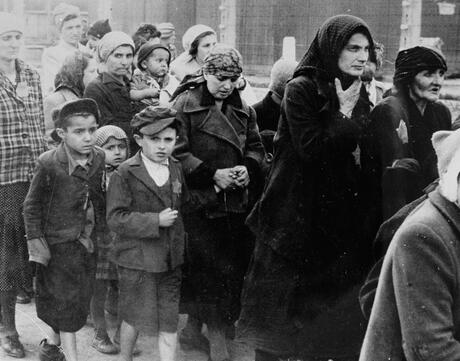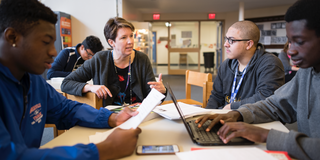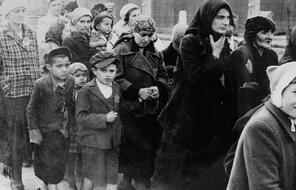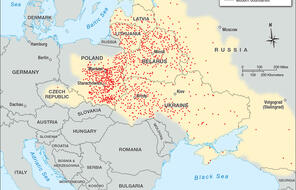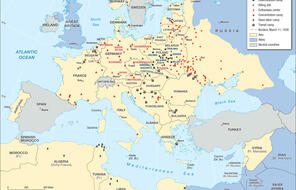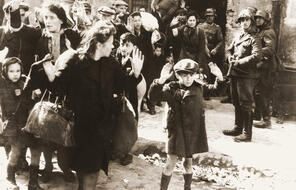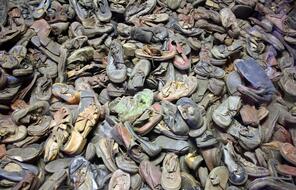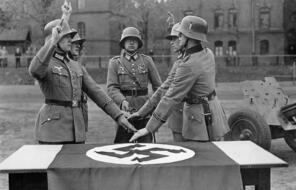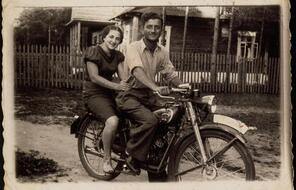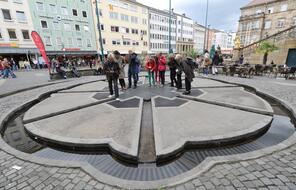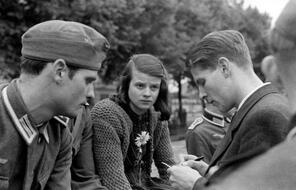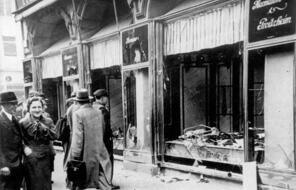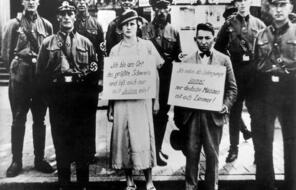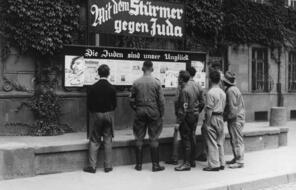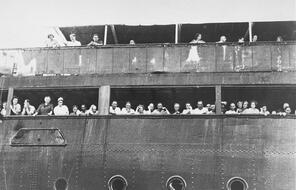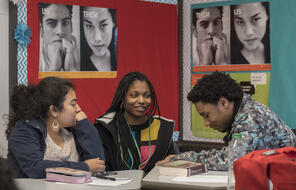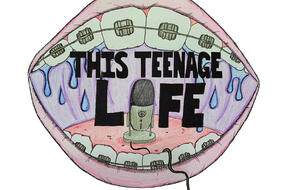Holocaust survivor Sonia Weitz begins her poem “For Yom Ha’Shoah” with these lines: “Come, take this giant leap with me / into the other world...the other place / where language fails and imagery defies, / denies man’s consciousness...and dies / upon the altar of insanity.”
To study the history in this lesson is to take Weitz’s “giant leap.” Learning about the Holocaust requires us to examine events in history and examples of human behavior that both unsettle us and elude our attempts to explain them.
When Germany invaded the Soviet Union in June 1941, its goal was to claim “living space” for the “Aryan” race that the Nazis had long wanted. But in order for Germans to settle in the territory of eastern Europe they had conquered from the Soviet Union in 1941 and 1942, they would have to empty it of so-called inferior races, including the millions of Jews who lived there. Early in the war, the Germans had forced Jews from the territories they conquered into ghettos and concentration camps and killed scores of them in mass shootings by mobile killing units. They had also considered plans to move the populations of Jews and other “non-Aryans” to far-off places like Madagascar or Siberia.
Eventually, however, the Nazi leadership decided that these plans would be too impractical or expensive; they chose instead a policy to annihilate all of the Jews of Europe. Historians believe this decision was made by Hitler and his advisors toward the end of 1941. As mobile killing units continued to operate throughout eastern Europe, the Nazis began to establish killing centers—camps designed for the purpose of murdering large numbers of victims, primarily in gas chambers, as quickly and efficiently as possible. By the end of the war in 1945, more than 6 million Jews and millions of other civilians—including Roma and Sinti, Slavs (Poles, Russians, and others), the disabled, and many of the Nazis’ political enemies—were murdered by the Third Reich.
To gain an understanding of the Holocaust, it is important to look not only at the acts of perpetrators but also at the experiences of victims and survivors. Yet it is impossible to truly understand their experiences. Nobel Prize winner and Holocaust survivor Elie Wiesel explains, “Ask any survivor and he will tell you, and his children will tell you. He or she who did not live through the event will never know it. And he or she who did live through the event will never reveal it. Not entirely. Not really. Between our memory and its reflection there stands a wall that cannot be pierced.”
Still, even though it is impossible to truly understand the victims’ experiences, and even though nothing can prepare us to encounter the horror of this crime, it is still important to take stock of the scope of this genocide—to appreciate how humanity was stripped from millions of people. This lesson helps students bear witness to the stories of some of the people who suffered under Nazi brutality.
This lesson also includes the stories of individuals who, in spite of the danger, violence, and suffering around them, resisted the Nazis’ program of dehumanization and murder. Some individuals imprisoned in the concentration camps made enormous efforts to preserve human dignity for themselves and others. A small percentage of prisoners in camps and ghettos found ways to carry out armed resistance.
This lesson challenges students to expand their ideas about resistance to include forms of “spiritual resistance,” or the struggle to maintain a sense of identity, dignity, faith, and culture in the degrading and dehumanizing systems of the ghettos and camps. While perhaps less perceptible, acts of spiritual resistance such as secretly providing education for children in concentration camps (A Basic Feeling of Human Dignity) or creating a secret archive representing the individual lives lost (Voices from the Warsaw Ghetto) are equally powerful.
It is important to recognize the incredible challenges that confronted Jews trying to resist Nazi oppression and violence. For some victims it was impossible to believe what lay ahead. Even once Jews recognized the gravity of their situation, during the war it was difficult for anyone, and especially Jews, to gain the resources or arms to resist the Nazis. Resistance was not possible for many other Jews who were confronted with what scholar Lawrence Langer has labeled choiceless choices. For example, consider the circumstances of the Sonderkommandos—Jewish prisoners who were kept alive and forced to help German guards murder other prisoners. According to Langer, there are no moral equivalents in the “normal” world for these experiences, no way to understand or judge their actions. Answering the question, asked by some, of why more Jews did not resist, Elie Wiesel explains, “The question is not why all the Jews did not fight, but how so many of them did. Tormented, beaten, starved, where did they find the strength—spiritual and physical—to resist?”
The history and the stories that students encounter in this lesson are difficult to fathom yet necessary to confront. They show the importance of honoring human dignity by showing us what can happen when it is taken away and what can be prevented when it is preserved.
